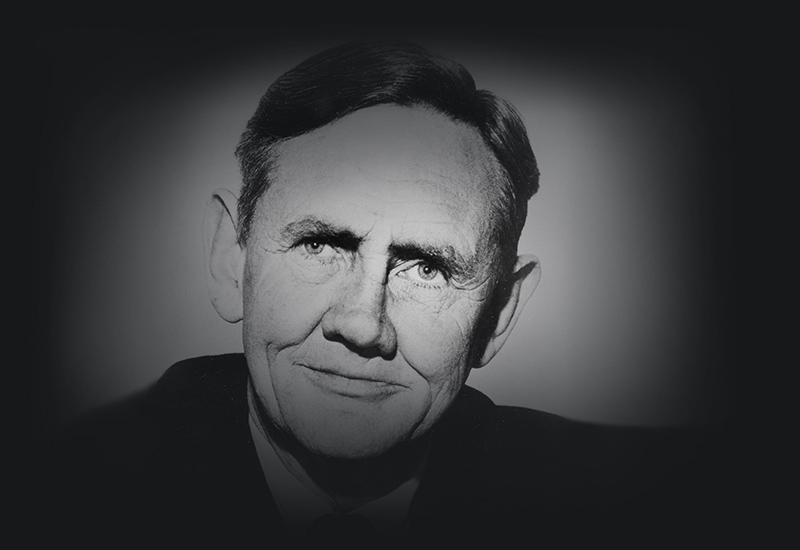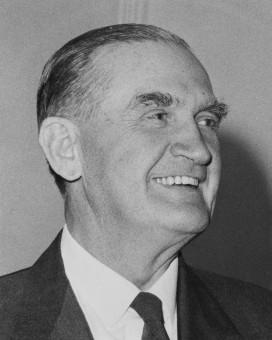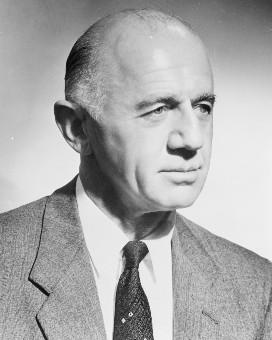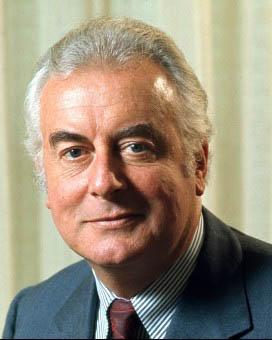On this page
1940 to 1949
10 Dec 1949: 1st elected to Federal Parliament
Gorton was elected as a Senator for Victoria in the 19th federal election.
1960 to 1969
10 Jan 1968: 19th Prime Minister
After the Liberal Party elected Senator John Gorton as the new Party leader, he was sworn in as Prime Minister. As a Senator, he had to resign his seat and then win a seat in the House of Representatives. Gorton was elected to Harold Holt’s former seat of Higgins in a by-election on 24 February 1968.
31 Jan 1968: Independent Nauru
Nauru gained independence from Australia and special member status in the British Commonwealth. Australia, New Zealand and Britain handed over their joint control of the local phosphate industry in 1970.
4 Jul 1968: Moratorium protest
A major demonstration in the ongoing campaigns against the war in Vietnam ended in violence. Crowds outside the United States consulate in Melbourne were charged by mounted police. Gorton had announced in February that no further Australian troops would be sent to Vietnam, but 8000 men were already fighting there.
28 Oct 1968: The postman calls once
Twice-daily mail deliveries, an urban standard since Federation, ceased around Australia. The previous year the national postcode system had been introduced to facilitate sorting large volumes of mail.
1 Dec 1968: Full wages
For the first time, Aboriginal workers on Northern Territory pastoral stations earned full wages. The award wage entitlement was later extended to all Indigenous employees of the Commonwealth government.
30 Apr 1969: 17th Governor-General
Perth-born Sir Paul Hasluck served as governor-general until 11 July 1974.
19 Jun 1969: Almost equal pay
After decades of campaigning, women workers were granted equal pay rates with men doing comparable work. Because the Arbitration Commission’s decision was for incremental increases, pay parity was not achieved until 1972.
21 Jul 1969: Men on the moon
When 2 United States astronauts stepped onto the moon, millions of viewers around the world watched on television. The images were received from Apollo II via Australia’s giant telescope in Parkes, New South Wales. The signals were sent from Parkes to Sydney by microwave, and then relayed as television signals to the ABC studios at Gore Hill in Sydney, and then to Houston, Texas for the international telecast.
25 Oct 1969: 27th federal election
Gorton’s Liberal-Country Party coalition retained government, but with a significantly reduced majority.
29 Nov 1969: The Indian-Pacific completed
The final section of the transcontinental railway was rebuilt to a standard gauge. Preparations began for the service enabling passengers to cross the continent without changing trains at state borders.
16 Dec 1969: Coming home
Gorton announced that a withdrawal of Australian troops from Vietnam would start in 1970.
1970 to 1979
4 Jul 1970: Changing to metric
Metric Conversion Board established to implement a gradual transfer from imperial to metric weights and measures.
1 Sep 1970: Uranium discovered
A rich uranium deposit was reported at Nabarlek in the Northern Territory. Gorton warned 2 weeks later that any foreign takeover would be prevented if necessary by legislation.
18 Sep 1970: 2nd moratorium
The 2nd Vietnam moratorium involved massive rallies around Australia. In November, a battalion returning after its tour of duty was not replaced. This was the beginning of the reduction in Australian forces in Vietnam.
10 Mar 1971: Left office
Facing increasing criticism within the Liberal Party, Gorton called a Liberal caucus meeting for 10 March 1971 to settle the matter of the Liberal leadership. A ballot was held and William McMahon was elected leader and became prime minister.
13 Dec 1975: Left parliament
Following the dismissal of the Whitlam government, both Houses of Parliament were dissolved. Gorton did not stand for re-election in his former seat of Higgins. Instead, he stood as an independent Senator for the Australian Capital Territory, but was not elected.
2000 to 2009
19 May 2002: Death
Gorton died at St Vincent’s hospital, Sydney, aged 90.





